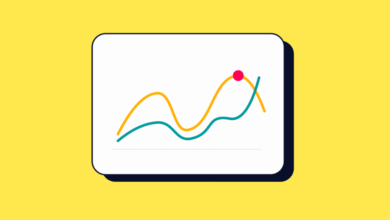SKAG vs STAG vs Hagakure – Which PPC Structure Is Right for You?

In the fast-evolving world of PPC advertising, how you structure your campaigns can make or break your performance. Whether you’re chasing lower CPCs, tighter relevance, or simply a more manageable account structure; one thing is clear, there’s no one-size-fits-all approach.
That’s where models like SKAG, STAG, and Hagakure come in. Each represents a distinct philosophy on how to group keywords, ads, and audiences. Some swear by SKAG’s laser focus. Others champion STAG’s scalability. And then there’s Hagakure, the automation-first method Google itself recommends.
But which one is right for you? And how do they really compare in the trenches of campaign management?
In this guide, we’ll break down the three structures, compare their strengths and trade-offs, and help you choose the right one for your goals, budget, and account size.
What Are SKAG, STAG, and Hagakure?
Before we dive into comparisons and case-by-case scenarios, let’s get the basics down. You’ve probably heard these acronyms thrown around in PPC circles, maybe even seen heated debates over which model is the “right” one to use. But let’s be honest, these terms can sound a bit intimidating at first, right?
So, here’s a clear and simple breakdown of what each one really means.
SKAG (Single Keyword Ad Group)
As the name suggests, SKAG is all about precision. In this structure, you create a separate ad group for each keyword. That means every single ad is tightly matched with its target search term, aiming for maximum relevance and higher click-through rates.
Subscribe to our mailing list to get the new updates!
STAG (Single Theme Ad Group)
STAG takes a more scalable approach. Instead of one keyword per group, you bundle related keywords around a single theme. Think of it as a capsule wardrobe, everything still works well together, but there’s more flexibility.
Hagakure, The Google-Favored Automation Approach
Hagakure refers to a minimalist, machine-learning-friendly campaign structure. Fewer ad groups. Broad match keywords. Heavy reliance on responsive search ads and smart bidding. It’s Google’s way of saying: “Trust the algorithm.”
Where It All Began with the SKAG Model
SKAG was the gold standard among performance-focused advertisers for years. One keyword per ad group. One message. Perfect alignment.
And it worked. Higher Quality Scores. Lower CPCs. Stronger CTRs.
But it came at a cost-time. Managing hundreds of ad groups quickly turned into a full-time job. And as Google evolved, that level of micromanagement became less practical. Still, if you need absolute control, SKAG remains one of the sharpest tools in the PPC toolbox.
Why STAG Entered the Picture
STAG emerged as a middle ground. Instead of isolating each keyword, it clusters them by theme. You might group “best running shoes,” “affordable running shoes,” and “running shoes for beginners” together.
It’s easier to manage. You still retain relevance. And it scales better.
STAG gives enough structure to keep things clean, but not so much that you’re drowning in ad groups. Perfect for teams who need clarity without chaos.
The Hagakure Method Explained
Hagakure flips the script. It leans into automation, broad match, smart bidding, and fewer ad groups. Instead of slicing your keywords thin, you group them wide and let Google’s machine learning do the optimization.
This method works best when you have large datasets and lots of conversions. The algorithm learns faster, and you spend more time on strategy and creative, rather than nitpicking match types.
But it’s not hands-off. You still need strong copy, clean conversion tracking, and well-defined goals.
SKAG vs STAG vs Hagakure – What Really Sets Them Apart
Let’s compare them from a strategic lens.
Control with SKAG
Maximum precision, but high effort. Every ad is tailored. Every search term is tracked. It’s manual, but incredibly targeted.
Balance with STAG
Smart grouping means easier setup and maintenance. You lose a bit of control but gain speed and sanity.
Automation with Hagakure
You guide. Google drives. Broad match and RSAs do the heavy lifting, especially in high-volume campaigns.
Pros and Cons of SKAG, STAG, and Hagakure
| Model | Pros | Cons | Best For |
| SKAG | ✅ Maximum relevance and control ✅ High Quality Score potential ✅ Easy to analyze search term performance | ❌ Tedious to scale ❌ Time-consuming to manage ❌ Can limit machine learning benefits | Niche keywords High-ROI campaigns Advanced teams |
| STAG | ✅ More scalable than SKAG ✅ Easier to manage ✅ Good balance of control and efficiency | ❌ Less control over individual queries ❌ Risk of diluted ad copy relevance | Mid-size businesses Thematic campaigns Lean PPC teams |
| Hagakure | ✅ Fully embraces automation ✅ Works well with broad match and RSAs ✅ Ideal for large datasets and smart bidding | ❌ Less transparency ❌ Relies heavily on Google’s algorithms ❌ May struggle with niche intent | Large accounts High-volume traffic Automation-friendly teams |
When to Use Which Model – Real-World Scenarios
Choosing a structure is not just about budget or account size. It’s about context. What are you selling? How much data do you have? What level of control do you need?
Let’s walk through three practical situations to help you decide.
Local Business with a Focused Keyword List? Go SKAG
Imagine you’re running ads for a boutique law firm, a small dental clinic, or a yoga instructor in your neighborhood. You have a few very specific services and a short list of keywords to target. Every click matters, and wasted impressions are not an option.
This is where SKAG really shines. By isolating keywords in separate ad groups, you can align your ad copy perfectly with each search term. That means better Quality Scores, stronger click-through rates, and more relevant landing page experiences. For businesses that depend on high-intent local searches, SKAG helps you make the most of every budgeted lira.
E-commerce Store with Product Categories? STAG Fits
Now think of a growing online store that sells skincare, electronics, or fashion. You have multiple product categories and dozens of related keywords that users might search. You want your ads to stay relevant, but you also need a system that won’t overwhelm your team.
STAG is the best match here. By grouping related keywords into themed ad groups, you can write focused ads without managing hundreds of small campaigns. It’s efficient, scalable, and still gives you a good level of relevance. For stores that need to cover a wide range of terms without sacrificing quality, STAG strikes the right balance.
Big Brand Needing Efficiency at Scale? Hagakure All the Way
Let’s say you work with a large food delivery app, an international travel agency, or a major retailer. Your campaigns generate thousands of clicks per day. You’re using audience signals, location targeting, and multiple ad formats. Managing all of that manually is no longer realistic.
This is where Hagakure becomes your go-to method. By using broader keyword groupings and leaning into Google’s machine learning, you give the system room to optimize. Responsive Search Ads and smart bidding handle variations automatically, allowing your team to focus on strategy, testing, and creative direction. If your account has enough volume and historical data, Hagakure often delivers the best return with the least friction.
Most advertisers find success not by picking one model, but by mixing approaches.
- You can use SKAG for your most competitive, high-value keywords where full control makes a difference.
- STAG works well for the bulk of your campaigns where structure helps, but deep granularity isn’t necessary.
- And Hagakure fits perfectly for brand, remarketing, or national-scale campaigns where automation thrives.
The most important takeaway is this. Your structure should serve your strategy, not the other way around. Choose the model that fits your current needs and adapt as you grow.
Key Takeaways for PPC Managers
- Don’t chase the “perfect” structure. Chase clarity and context.
- The more data you have, the more you can hand off to automation.
- Blend models when it makes sense. Use SKAG for control, STAG for sanity, Hagakure for scale.
- Let Google automate but never stop optimizing the inputs.
FAQ
What is the Quality Score in Google Ads, and how is it connected to SKAG or STAG?
It measures how relevant your ads, keywords, and landing pages are. SKAGs often boost it through tight alignment. STAG and Hagakure can too, with good structure and copy.
What is a good Quality Score?
7 and up is solid. 8 to 10 is great. Lower than 5? You might need to rethink your relevance.
How do I get a 10/10 Quality Score?
Align keywords with ads and landing pages. Boost CTR. Improve speed. SKAG gives you the most control, but STAG and Hagakure can also get you there.
How can I improve my Quality Score?
- Use relevant keywords
- Write engaging ad copy
- Optimize landing pages
- Add negative keywords
- Test and refine your ads
Final Thoughts, Is One Model Truly Better?
No single model is king. Each structure has its time and place. What matters is whether your setup matches your goals, budget, and team capacity. Test different models. Blend approaches. Adjust as your business evolves.
And most importantly? Keep the user in mind. Because no matter how clever your structure is, if your ad doesn’t speak to what they need, you’re missing the point.
What do you think? Have you found success with one of these structures, or maybe your own hybrid? Let’s talk in the comments.
Wanna see how your website perform?
Let's run a comprehensive technical SEO audit for your website and share a compelling SEO strategy to grow your online business.
SEO Audit →


